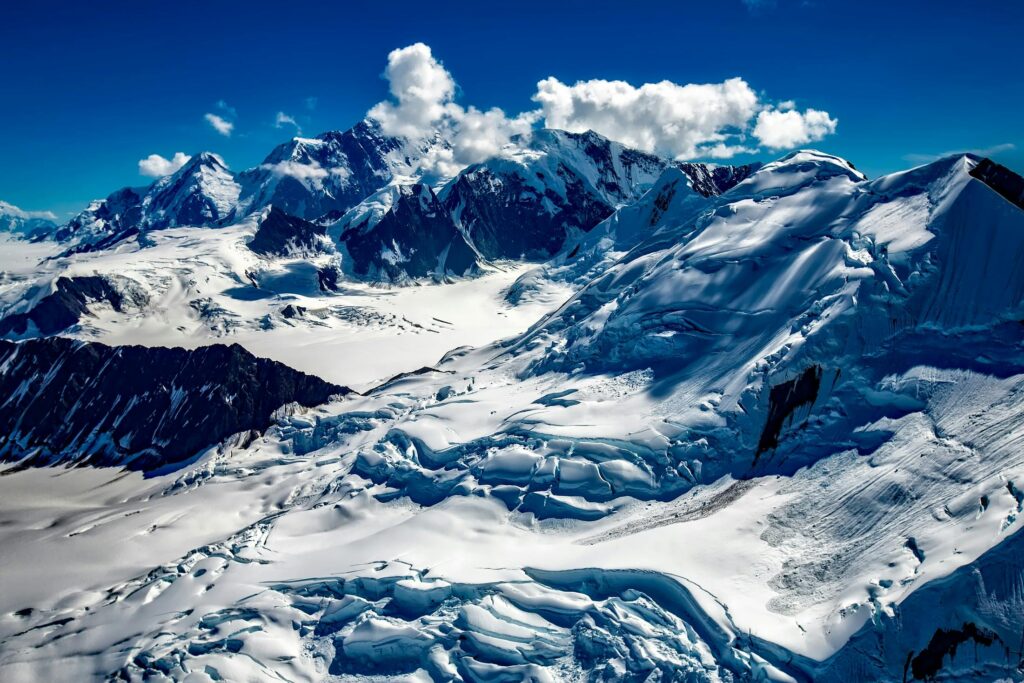Mount Kilimanjaro, located in Tanzania, Africa, is the continent’s highest peak, rising approximately 5,895 meters (19,341 feet) above sea level. Known as the “Roof of Africa,” Kilimanjaro is a dormant stratovolcano with three volcanic cones: Kibo, Mawenzi, and Shira. The mountain is part of Kilimanjaro National Park, a UNESCO World Heritage Site.

Climbing Mount Kilimanjaro is a unique experience due to its diverse ecosystems, which range from tropical rainforest at the base to arctic conditions at the summit. Hikers can encounter five distinct climatic zones:
- Cultivation Zone (800-1,800 meters): The lower slopes are covered with farmland and villages, where crops like bananas and coffee are grown.
- Rainforest Zone (1,800-2,800 meters): This lush, dense forest is home to a variety of wildlife, including monkeys, birds, and unique plant species.
- Heather-Moorland Zone (2,800-4,000 meters): Characterized by heath and moorland vegetation, this zone features large shrubs and endemic plants like the giant groundsels and lobelias.
- Alpine Desert Zone (4,000-5,000 meters): This barren landscape has rocky terrain, sparse vegetation, and dramatic temperature fluctuations between day and night.
- Arctic Zone (above 5,000 meters): Near the summit, the terrain is icy and snowy, with glaciers and scree slopes leading to the crater rim.
There are several routes to reach the summit, each offering a unique experience:
- Marangu Route: Known as the “Coca-Cola” route, it is the only route with hut accommodations and is considered the easiest path.
- Machame Route: The “Whiskey” route is popular for its scenic views and challenging terrain.
- Lemosho Route: Offers beautiful landscapes and a higher success rate due to a longer acclimatization period.
- Rongai Route: Approaches from the north and is less crowded, with a gentler ascent.
- Umbwe Route: The steepest and most direct route, recommended for experienced climbers.
Climbing Kilimanjaro typically takes 5 to 9 days, depending on the chosen route and the pace of acclimatization. The summit, Uhuru Peak, provides stunning panoramic views and a profound sense of achievement for those who reach it.
Mount Kilimanjaro is not only a physical challenge but also a journey through varied climates and landscapes, making it a must-visit destination for adventure enthusiasts and nature lovers.